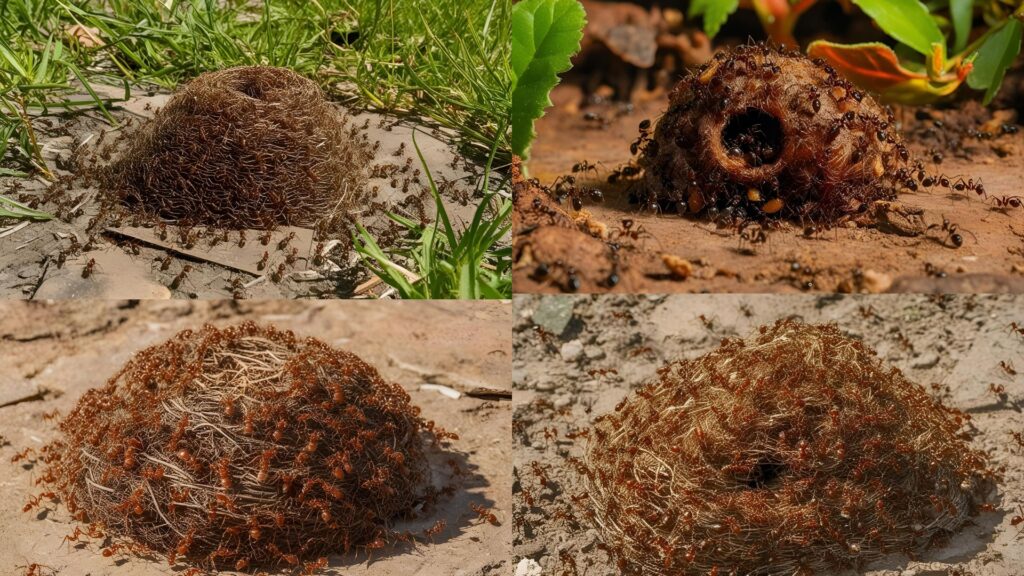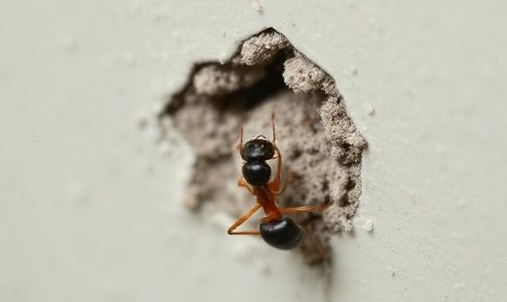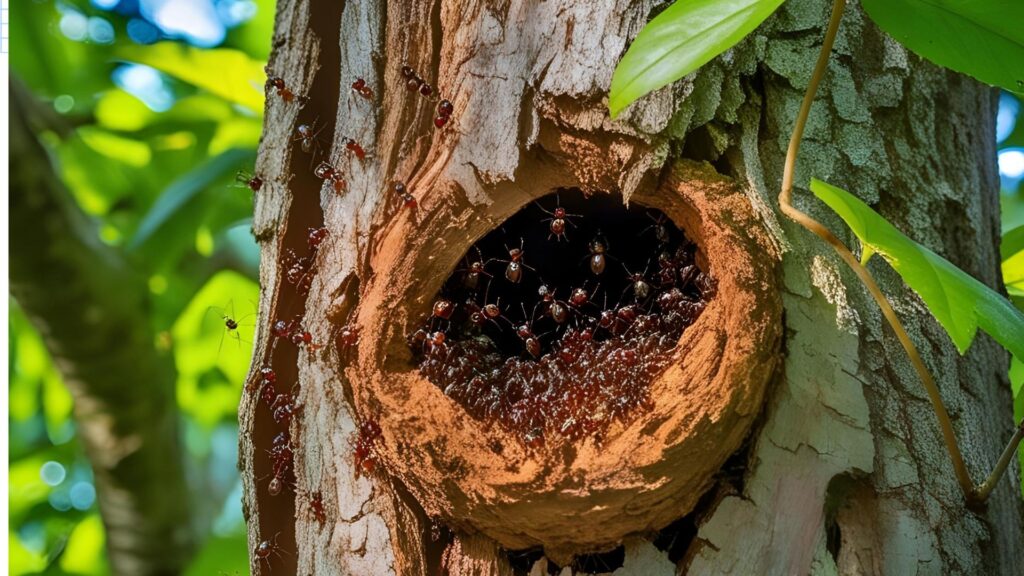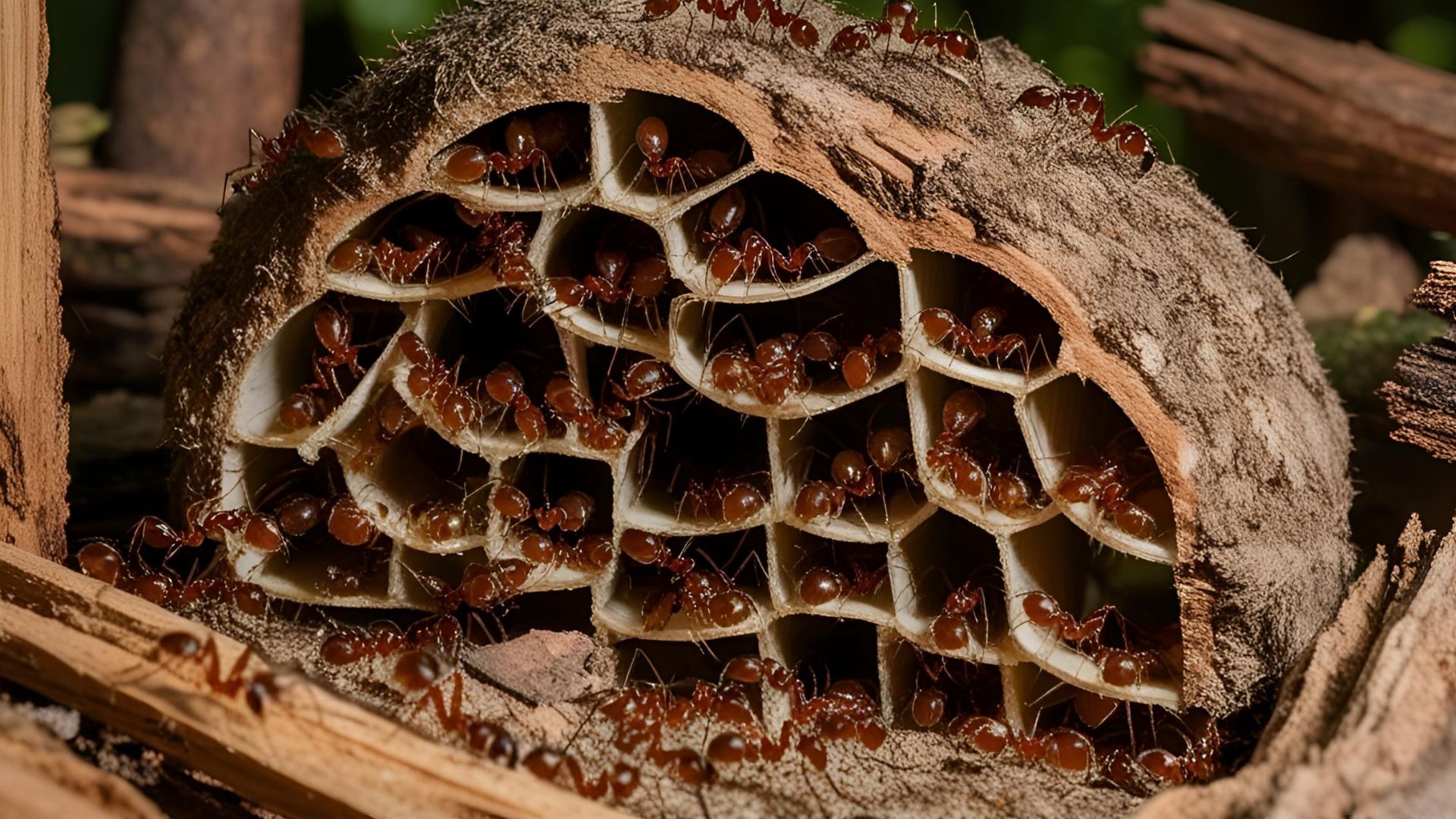Carpenter ants are notorious for causing structural damage by tunneling through wood to build their nests. Unlike termites, they do not eat wood but excavate it to create smooth galleries for their colonies. If you suspect a carpenter ant infestation, finding their nest is the first step toward effective control. In this guide, we’ll explore where carpenter ant nests are commonly found, how to identify them, and the best ways to eliminate them.
What Does a Carpenter Ant Nest Look Like?

Carpenter ant nests are characterized by smooth tunnels in wood. Unlike termite damage, which appears rough and muddy due to soil particles, carpenter ant tunnels are cleanly excavated. Their nests can be found in both moist and dry wood, but they prefer decayed wood as it’s easier to chew through.
Carpenter Ant Nests Pictures & Photos
To help identify carpenter ant nests, here are some key visual features:
- Wood shavings (frass) – Fine sawdust-like material around baseboards or walls
- Ant trails – Active movement of ants in and out of wooden structures
- Hollow-sounding wood – If you tap on the wood, an infested area might sound hollow
- Small openings in wood – Carpenter ants use exit holes to push out debris
Tip: You may also hear a faint rustling sound coming from inside walls, indicating an active nest.
Common Carpenter Ant Nest Locations
Carpenter ants establish nests in various places, including indoors and outdoors. Here’s where you should look:
1. Carpenter Ant Nest in Wall

Indoor carpenter ant infestations are often found inside walls, especially in:
- Moist or rotting wood (bathrooms, basements, kitchens)
- Near windows and door frames
- Behind insulation and drywall
🔹 How to Find It: Use a flashlight and tap the suspected area. If you hear a hollow sound or see frass coming out, there’s likely a nest inside.
2. Carpenter Ant Nest in Tree

Carpenter ants love nesting inside trees, especially ones with decayed or damaged wood. If you see ants moving in and out of holes in a tree trunk or branches, they may have built a colony there.
🔹 How to Find It: Look for entry holes, sawdust piles, and increased ant activity around the tree’s base.
3. Carpenter Ant Nest in Ground

While carpenter ants prefer wood, some species build nests in the soil under rocks, logs, or decaying tree stumps. These nests can also extend beneath houses and patios.
🔹 How to Find It: Check areas with soft, damp soil, and observe ant movement leading to hidden entry points.
How to Find a Carpenter Ant Nest in Your Home
If you suspect carpenter ants inside your house, here’s a step-by-step method to locate their nest:
1. Follow the Ant Trail
- Carpenter ants leave a scent trail for other ants to follow.
- Observe their movement during the evening when they are most active.
2. Look for Sawdust (Frass) and Small Holes
- Check for piles of wood shavings near baseboards, windows, and attics.
- Small pin-sized holes in wooden surfaces may indicate an entry point.
3. Tap on Suspected Areas
- Use the “knock test” – tap the wood with a screwdriver.
- If the wood sounds hollow or you hear a faint rustling, a nest may be inside.
4. Listen for Rustling Sounds
- At night, when the house is quiet, listen carefully near walls and wooden structures.
- A soft rustling or clicking sound could indicate an active colony.
How to Control Carpenter Ant Nests
Once you find the nest, the next step is eliminating the infestation. Here are effective control methods:
1. Use Bait to Eliminate the Colony
Carpenter ants prefer sugary or protein-rich foods. Baits work well because worker ants carry poisoned food back to the nest, killing the queen and colony.
🔹 Best Baits:
- Sugar-based gel baits – Attract carpenter ants effectively.
- Protein-based bait stations – Help eliminate worker ants.
2. Direct Nest Treatment
If the nest is exposed, you can:
- Use insecticidal dust – Apply inside nest openings to kill ants inside walls.
- Spray residual insecticide – Effective for wall voids and cracks.
3. Remove Moisture Sources
Carpenter ants thrive in damp environments. Fix leaks, improve ventilation, and reduce humidity in basements and attics.
4. Seal Entry Points
Close off any gaps, cracks, or crevices around windows, doors, and siding to prevent new colonies from forming.
5. Remove Rotten Wood and Tree Stumps
Outside, clear away any decaying wood, logs, or dead tree trunks to eliminate potential nesting sites.
When to Call a Professional Exterminator
If the infestation is severe, DIY methods may not be enough. Consider calling a pest control expert if:
- The nest is hidden deep inside your home.
- You notice recurring ant activity even after treatment.
- Structural damage is visible.
Conclusion
Carpenter ants can cause significant damage if left unchecked. Finding their nest is the first step in effective control. By identifying their nesting locations—whether in walls, trees, or the ground—you can take action using bait, insecticides, and moisture control methods. If the infestation persists, seeking professional help ensures complete eradication.


